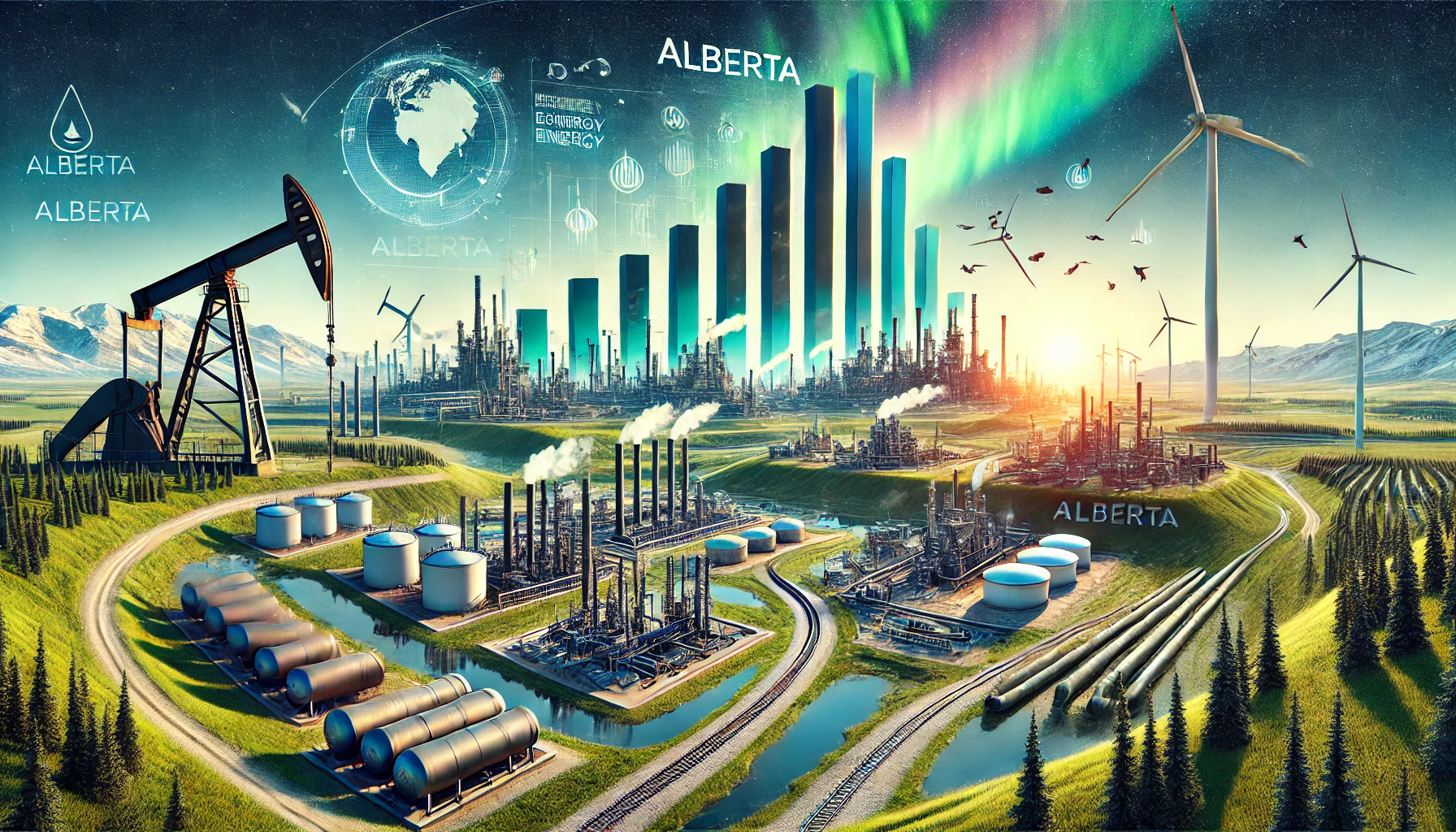Alberta, Canada’s energy powerhouse, has long been a cornerstone of the global energy market. With its vast reserves of oil, natural gas, and other energy resources, the province stands as a beacon of untapped potential. If the federal government were to adopt a more aggressive energy development strategy, akin to a “Drill Baby Drill” approach, Alberta’s true economic and geopolitical potential could be fully realized. Such a strategy would not only transform Alberta but could also position Canada as a dominant energy superpower in the global arena.
Alberta’s Energy Wealth
Alberta boasts the fourth-largest proven oil reserves in the world, accounting for 9% of global reserves. The province’s oil sands hold approximately 165.4 billion barrels of bitumen, making up 99% of its oil reserves. These numbers underscore Alberta’s significance in the global energy market.
In addition to the oil sands, Alberta’s conventional crude oil reserves stand at 1.8 billion barrels. In 2015, the province produced 2.5 million barrels of crude bitumen daily, alongside 530,000 barrels per day of conventional oil. With projections indicating that crude bitumen production could reach 4 million barrels per day by 2025, Alberta’s potential to scale up production is undeniable.
Natural Gas: An Abundance of Opportunity
Alberta’s contributions to Canada’s natural gas production are equally impressive. The province’s remaining established reserves of natural gas are estimated at 31.2 trillion cubic feet (Tcf), including:
- 29.3 Tcf of conventional reserves
- 1.9 Tcf of unconventional reserves (shale and coalbed methane)
In 2015 alone, Alberta produced 3.5 Tcf of conventional natural gas, 0.06 Tcf of shale gas, and 0.24 Tcf of coalbed methane. These figures highlight the province’s capacity to meet domestic and international energy demands, especially in an era where natural gas is becoming a cornerstone of the global energy transition.
Diversified Energy Resources
Beyond oil and natural gas, Alberta has vast reserves of coal, with 33.2 billion tonnes remaining in established reserves. In 2015, the province produced 27.3 million tonnes of coal annually. This resource, while less central in today’s energy dialogue, still represents a significant energy and economic asset.
Alberta’s electricity generation capacity further showcases its energy diversity. With an installed generating capacity of 16,133 megawatts (MW), the province’s energy mix includes 43% natural gas, 39% coal, and 15% renewable sources such as hydro and wind. This balanced portfolio provides Alberta with a robust foundation for future energy development.
The Case for “Drill Baby Drill”
Adopting a “Drill Baby Drill” strategy would involve maximizing Alberta’s energy output through accelerated exploration, development, and production. While this approach is not without its environmental and political challenges, the economic and geopolitical benefits could be transformative:
- Economic Growth: Increased energy production would generate significant revenue, create jobs, and stimulate economic activity across the province and the nation. The energy sector’s growth would also support ancillary industries such as manufacturing, logistics, and technology.
- Global Energy Leadership: Alberta’s resources position Canada as a potential leader in global energy markets. By ramping up production, Canada could meet rising global energy demands, particularly in regions transitioning from coal to cleaner energy sources like natural gas.
- Energy Security: Enhanced production would bolster Canada’s energy security while providing reliable exports to allies, reducing their dependence on less stable energy-producing regions.
- Geopolitical Influence: As the Arctic becomes increasingly accessible due to climate change, Alberta’s proximity and resources could enhance Canada’s geopolitical influence in this strategically critical region.
Addressing Environmental Concerns
Critics of a “Drill Baby Drill” strategy often point to environmental concerns. Alberta, however, is already at the forefront of developing technologies to reduce the environmental impact of energy production. The province’s investments in carbon capture and storage (CCS) technologies, hydrogen development, and renewable energy initiatives demonstrate its commitment to balancing economic growth with environmental stewardship.
Programs like the Alberta Petrochemicals Incentive Program (APIP) highlight the province’s focus on diversifying its energy sector and reducing emissions. These initiatives could serve as models for sustainable energy development, proving that increased production and environmental responsibility are not mutually exclusive.
Investment Opportunities in Alberta
For investors, Alberta’s energy sector offers a wealth of opportunities. The province’s untapped resources, coupled with advancements in extraction and processing technologies, create a favorable environment for investment. Key areas of interest include:
- Oil Sands Development: With 165.4 billion barrels of bitumen reserves, the oil sands remain a cornerstone of Alberta’s energy sector.
- Natural Gas Infrastructure: Investments in pipelines, processing facilities, and export terminals could unlock the full potential of Alberta’s natural gas reserves.
- Renewable Energy: Alberta’s push for diversification includes significant opportunities in wind, solar, and hydrogen energy projects.
- Carbon Capture Technologies: As global demand for low-carbon energy solutions grows, Alberta’s leadership in CCS offers a lucrative investment avenue.
Challenges and Considerations
While Alberta’s energy potential is vast, realizing it fully requires addressing several challenges:
- Regulatory Hurdles: Streamlining approval processes for energy projects is essential to attract investment and expedite development.
- Market Access: Expanding pipeline infrastructure and securing export markets are critical to maximizing the value of Alberta’s resources.
- Public Perception: Building public and political support for increased energy production requires transparent communication about economic benefits and environmental safeguards.
Conclusion
Alberta’s energy resources position it as a key player in the global energy landscape. By adopting a “Drill Baby Drill” strategy, the province could unlock unprecedented economic and geopolitical potential. While the path forward requires careful navigation of environmental and political challenges, the rewards for Alberta, Canada, and global energy markets could be transformative.
Invest Offshore continues to monitor opportunities in Alberta’s dynamic energy sector. For investors seeking to capitalize on the province’s untapped potential, now is the time to explore the possibilities.

Leave a Reply